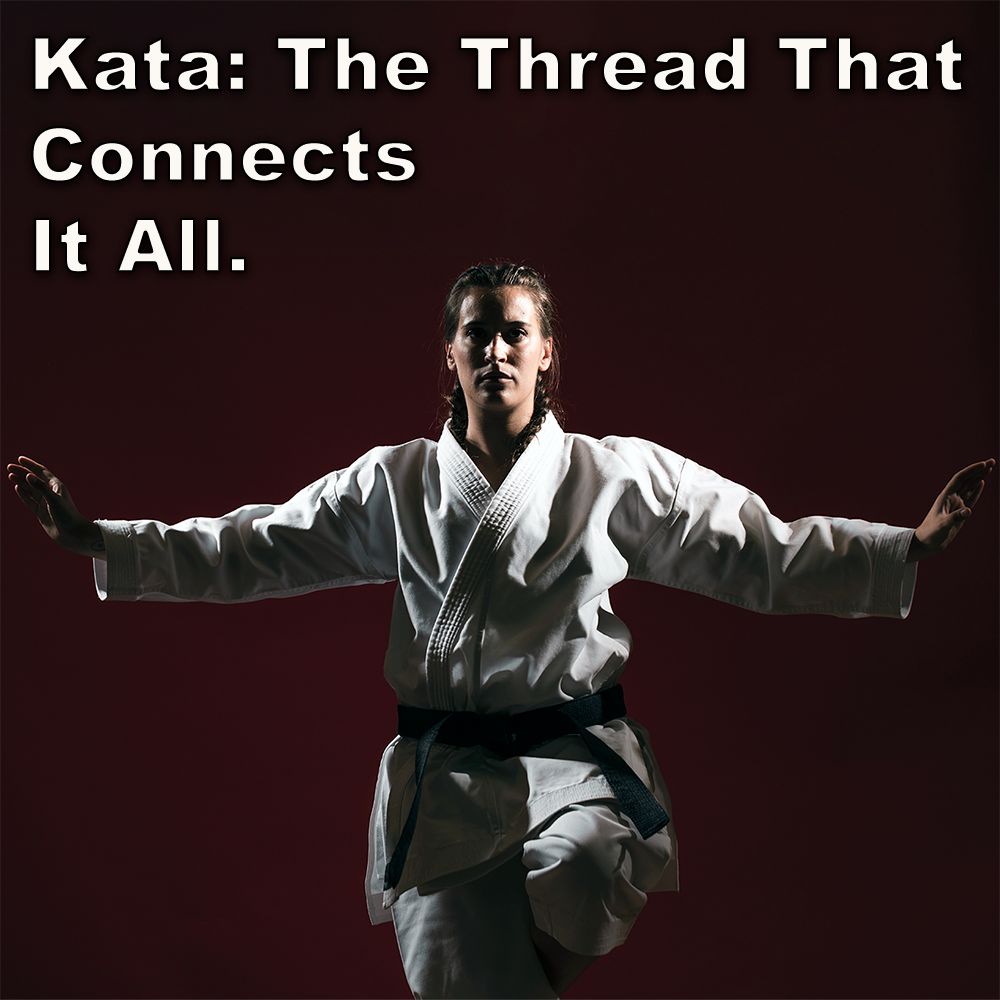
(Approx 2 minute 25 second read)
There are plenty of reasons why kata has become somewhat disconnected from real combat. From philosophical and political decisions made by Funakoshi and others following WWII to common training methods, distorted views of how fighting works, and the spread of information lacking depth.
.
I get so many comments telling me how useless kata is. But the people who make these comments just don’t seem to understand what it is.
.
In Japan, your whole life – not just the martial arts – is governed by different kata. We often translate kata as form or shape. However, kata can also mean the “way of doing” something.
.
Kata was developed to help practitioners remember sequences and principles – methods of doing things, usually the correct way.
.
For the karateka then, it’s all there in the kata.
.
Perhaps it is useless to those who don’t understand its applications. I don’t blame younger generations for struggling with this because, for the most part, they only know what they were taught.
.
Look at it another way – what technique could you imagine doing that isn’t in the various kata? If someone shows you a punch, kick, ‘block’, evasion, trap, arm-bar, or whatever, you can generally point to a kata where it’s found.
.
Why? Because that’s the whole point of kata. Everything is there: the culmination of two-person drills, techniques, and principles of your particular style of karate.
.
For those who call it useless, you may need to adjust your perception of what and how kata is teaching you.
.
Kata is a mnemonic. What’s a mnemonic? It’s defined as a device such as a pattern of letters, ideas, or associations that assists in remembering something. Aiding or designed to aid the memory.
.
This means kata isn’t something separate or meant to be a stand-alone exercise, even though that’s how it’s often taught today. All the techniques you need are there, waiting for you to rediscover them.
.
Kata isn’t designed to be beautiful. It’s not there to fight opponents from beginning to end from all directions. It’s there to teach you, to remind you.
.
Of course, today, we don’t necessarily need kata. We have books, videos, YouTube, and so on. But kata remains a way to teach principles and techniques and memorize them without relying on external supports like books or videos.
.
To learn all your techniques by heart and have access to them from easy memory, then a kata is helpful, isn’t it?
.
On the other hand, you could focus only on one of the various aspects of the martial arts and become extremely proficient at that. You don’t need to learn kata to become good in that aspect. However, if you’re repeating movements more than once, then wouldn’t that look very much like a kata?
.
If you repeat movements in practice, you’re essentially creating your own kata. Whether it’s just two movements (a jab and a cross) repeated, or the more complex sequences we practice, the idea is the same. It’s a “way of doing” something.
.
The reason there are multiple movements, principles and sequences is that the kata were originally the complete system of its creator. But that doesn’t mean you can’t pull out what you need – two movements, perhaps – when you need them.
.
So, if you think kata is useless, then maybe they are – for you. Kata: The thread that connects it all.
.
.
Written by Adam Carter – Shuri Dojo
.
.
Photo Credit: Freepik . com
